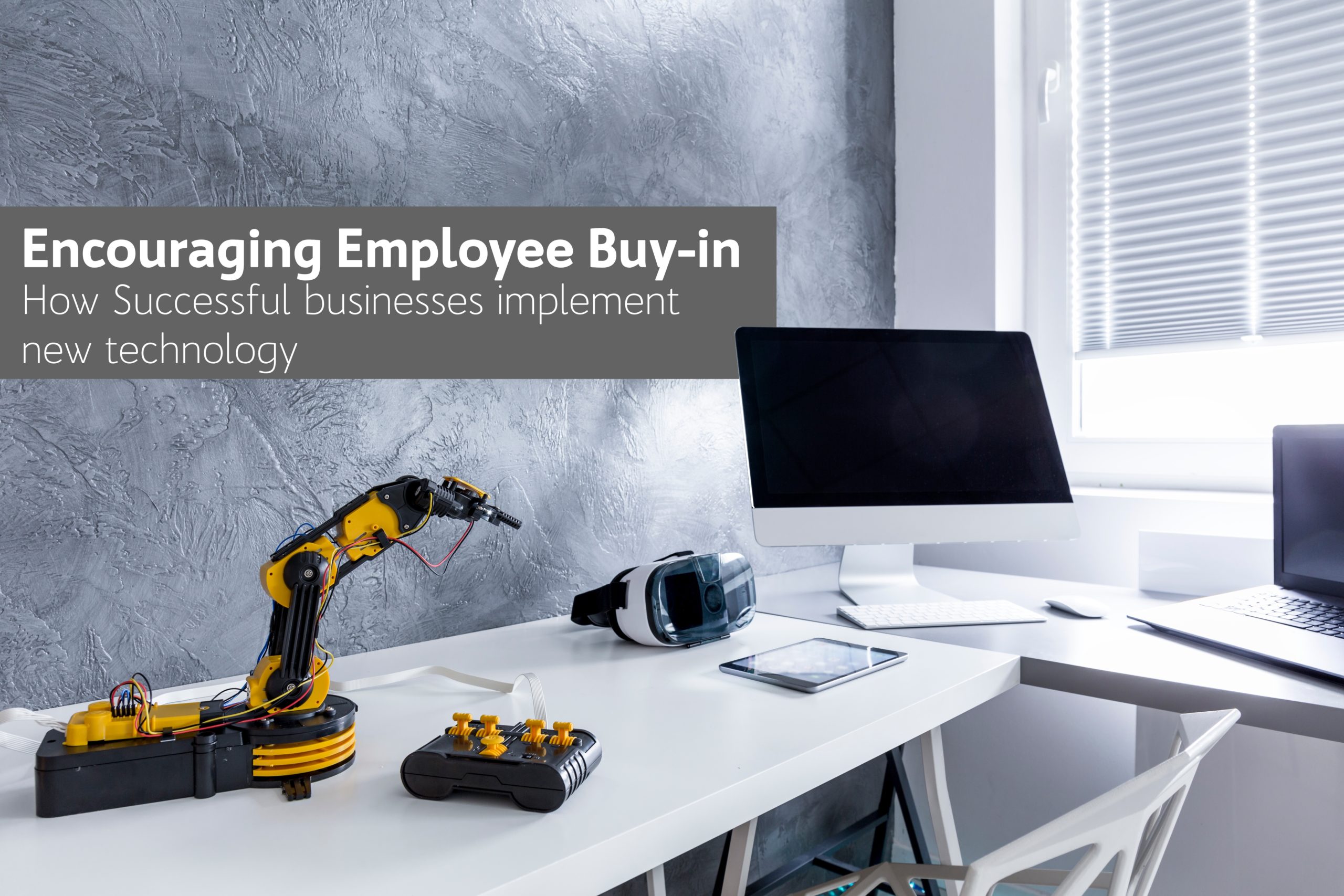
Buy in for new technology is difficult to achieve across organisations of all sizes. Whether you have an in-house IT team, outsourced provider or have a one man operation, rolling out new tech always comes with inherent challenges.
After the fact, you have invested in a new, shiny technology that is the guaranteed answer to all of your problems. But the question remains and can't be answered until you set it live, will your staff actually use it and will it produce an ROI that makes it valuable?
We all have experiences where a new technology has been introduced and rolled-out, but it comes with a handbook as complex and cumbersome as reading a book in a foreign language. This doesn't make the adoption process any easier for team leaders, managers or staff who are using it every day.
One thing that managers tend to overlook is who is actually using the software. It's all well and good that your IT Team thinks it's great and they are able to use it, but chances are these are your most technical employees. Who is at the coal face in the organisation and will this technology actually improve their role and subsequently ROI?
So what can you do?
Be picky how you deploy.
We've spoken in the past about the importance of C-Suite buy-in and this rule still applies. If you can gain early support from execs, your job is going to be easier in the long-run. When choosing departments in which to deploy try to identify your technology early adopters or teams who have performed well with new tech in the past. Choose highly influential people to trial software with and be sure to support and ensure successful use, chances are these people will start advocating for you and your new software, making your job easier and your chances of success higher.
Do your research.
We've all had those experiences where new technology is introduced and then comes the training sessions. Depending on the complexity of the change these sessions could last a week or so - not good enough! One of the problems with enterprise software is that often the 'consumer' is forgotten and systems are lacking the intuitiveness of other solutions. Imagine if your business introduced an iPhone for the first time, your staff would be able to use it in a matter of hours. With the sheer amount of options available for most tasks these days you need to fully understand how your staff will interact with it, their technical ability and the ROI that you're expected to gain from investing. You can always have a chat with a trusted IT expert to understand fully what you are trying to achieve and what would be the best solution for you. An IT provider can also work with you to create a solution that takes your staff into account and help tailor a solution that can be easily adopted - does this sound like what you're after? Click here to organise a consultation.
Don't get caught up in the marketing hype.
There's big money in enterprise solutions and companies know exactly what to say to get your tongues wagging when it comes to their solutions. Don't allow yourself to get distracted by fancy sounding features that you're likely not going to use. Many projects that we have seen go off track when decision makers become caught up with secondary functions of a solution, rather than keeping the primary goal in their sights.
Sell, Sell, Sell
When it comes to introducing a change, especially technology, success is never guaranteed. You have the ultimate goal of success, so does your IT team, but there will be people in your organisation who are resistant to changes, especially if they are going to have to change what they do on a daily basis (even if it makes things easier). Make sure you answer the question of "what's in it for me" for every different department, working with a marketing team to craft a strong message is going to help your initiative get off the ground and thrive. Make sure that you're heralding initial successes with early adopters to highlight how well the technology can work.
Don't rest.
When it comes to implementing new projects there is always a very specific end date where the change is expected to be fully functional. But the reality is when introducing a large change into your organisation you need to look as the whole process as a journey where things will inevitably go wrong. It's more likely than not that you're going to have to change direction a few times to reach your goal, but with flexibility and an understanding of this, the rigidity of change introduction is reduced.
We're likely not telling you anything that you don't already know. These are seemingly common sense suggestions but the simple fact is that most initiatives when they start neglect these simple tips. Companies too often pit vendors against each other to get the run down on the features and what they are going to be delivered with. When you're thinking of introducing your next change you should weigh up the vendors' ability to help your company achieve the outcome that you want to achieve from introducing the software. The best providers will appreciate your questioning and will be able to have a more transparent relationship with you when it comes to achieving your initiatives.
